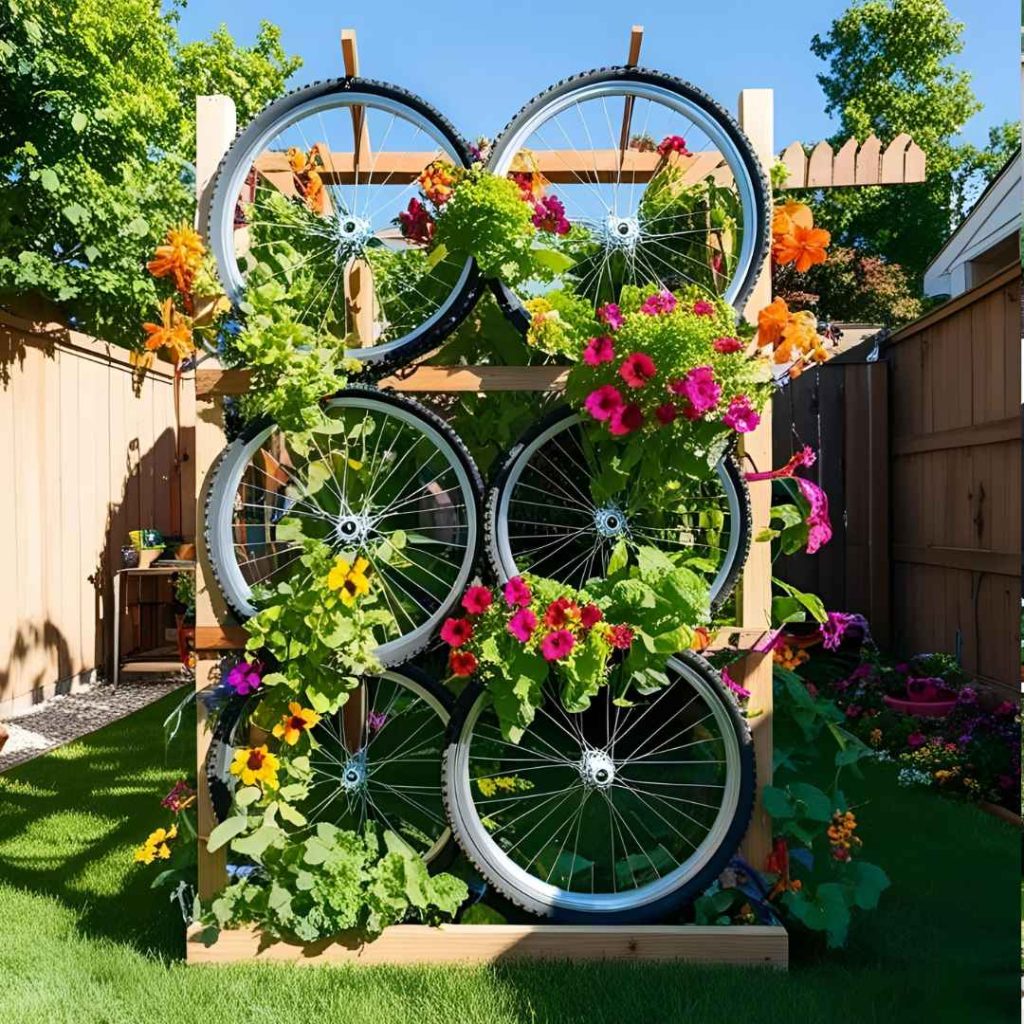Vegetable trellis structures are an essential component of any vegetable landscaping and are ideal for real ascending tomatoes, various squash varieties, pole beans, and peas.
You may optimize the space in your garden and save money by building a do-it-yourself vegetable pergola out of repurposed materials! Here are some tips for making your own do-it-yourself vegetable trellis out of recyclable supplies.
Twine And Branches:

A self-build vegetable arbor may be made to fit almost any gardening area with some string and scattered branches.
The two most popular patterns look like a portable shelter and a clothesline. Twine must be weaved between two robust X forms constructed from twigs in order to use the clothesline method.
Another form can be made with branches arranged in a circular fashion and leaning upright against one another at the top, resembling a teepee. To provide spaces for veggies to expand, wrap twine around the trunks at various levels.
Pallets Made Of Wood:

I dislike building containers out of pallets of lumber since I have no idea where they originate from or what they’re made of. However, because they are so adaptable, timber pallets make an excellent do-it-yourself vegetable canopy. To make a dual-sided vegetable pergola, slant two wooden boards facing one another like an umbrella.
Or, for a four-sided pergola, fasten two together to create an acute angle. The simplest (and perhaps most lazy) way is to rest a pallet made of timber against an exterior surface or railing.
It’s time to make your own vegetable arbor! In every situation, you might need to add wiring or twine at varying heights so that veggies can cling to it.
Chicken Wire Or Fencing Projects:

It is likely that several ancient fencing or chicken wire will be laying around among decades of “keep-that-we-may-need-it-someday” people. Your self-build veggie scaffolding may be shaped to be accepted in any landscaping space using an approach comparable to the wooden pallets.
For your climbing fruits and veggies, you may either make something unsupported or balance the components against an upright structure or railing.
Rims For Bicycles:

Alright, this is a crazy pick, but when I saw it, I was really intrigued. You can arrange two old bicycle wheels so that a pole connects them in the middle. Twine or cable is woven between the two sets of wheels on one rim, which is on the earth’s surface and the other ahead of it.
This is a wonderful manner to get 360-degree utilize out of your self-build vegetable trellising. Another approach to using bicycle wheels is to accumulate them upward onto a post or a boundary. In both versions, the wheels make outstanding positions for your ascending veggies.
The Outdated Screen Door:

A screen door’s broad entrance and durable construction make it ideal for a do-it-yourself vegetable pergola.
You may create wire or rope through the aperture. To provide your ascending veggies great inclined room, you may also fasten bamboo or timber chunks at different distances.
Strong Strings And a Solid Barrier:
You may easily create an arrangement by attaching twine or sturdy wire vertically as well as horizontally to a robust wall or fencing. There will be lots of places for your ascending veggies to climb onto.
Use caution when applying this technique near problematic climbing vegetation, such as ivy. Long-term harm to the boundary or fencing may result from such plants being overtaken.
There Are No Limits! Think creatively and let your creative abilities run free if you enjoy designing unusual and imaginative gardens. A do-it-yourself vegetable trellis can be made out of almost anything.
I’ve seen rusty aluminum box springs and even repurposed headboards placed in the soil. The secret is to contemplate vertically and give your veggies plenty of ledges to ascend.
